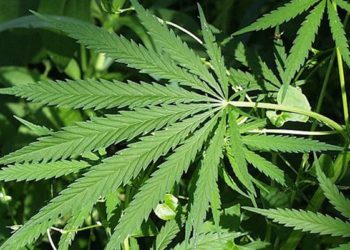Teens who text and drive take other driving risks
Image: PD
By Laurel Wickberg and Leah Carr
Dr. William Raszka, M.D.
1. 44.5% of U.S. high school teens over 16 years old reported having texted while driving in the past 30 days.
2. Texting while driving in teens was associated with a higher rate of other risky driving behavior.
Evidence Rating Level: 2 (Good)
Study Rundown: Though many studies have examined teen driving behavior, teenagers’ cell phone use while driving and this behavior’s potential link to other risky behaviors have not been thoroughly investigated. The current report draws from the Center for Disease Control’s 2011 national Youth Risk Behavior Survey (YRBS), which found that 44.5% of the high school students studied indicated that they had texted at least once while driving (TWD) in the past 30 days. The study also found that TWD was significantly associated with other risky driving behaviors including irregular seat belt use, riding as a passenger with a driver who had been drinking, and driving while under the influence of alcohol. The YRBS is limited by its reliance on self-reporting. Survey questions could leave room for alternative interpretation. Teens that neither drove nor owned a phone also may have replied that they did not TWD. However, this large national survey has demonstrated excellent test-retest reliability assessing other behaviors. The findings indicate that there remains room for improvement in reducing rates of teens TWD. The study also suggests that teens that TWD need additional anticipatory guidance for other risky driving behaviors.
Click to read the study, published today in Pediatrics
Relevant Reading: Prevalence of teen driver errors leading to serious motor vehicle crashes
Study Author, Emily Olsen, MSPH, talks to 2 Minute Medicine: Health statistician in the Center for Disease Control’s Division of Adolescent and School Health.
“Teens are inexperienced drivers, and are less able than more experienced drivers to recognize dangerous driving situations. Teen drivers are also less adept at handling these hazards when they come across them. For this reason, teens should avoid anything behind the wheel that can take their attention off the task of driving, including texting while driving. Pediatricians can help by educating teens and their parents about safe driving practices and by providing guidance to parents about being positive role models.”
In-Depth [survey]: The 2011 YRBS collected 8505 responses from United States high school students > 16 years of age to the question “In the past 30 days, on how many days did you text or email while driving a car or other vehicle?” Responses were grouped to determine the potential association between TWD and other risky driving behavior. The rate of any positive TWD response was 44.5% while the rate of daily TWD was 11.5%. TWD was associated with a higher prevalence of irregular seat belt use (p < .01), riding with a driver who had been drinking alcohol (p < .0001) and driving while under the influence of alcohol (p < .0001). Those who engage in TWD were 5.33 times as likely to have driven when they had been drinking when compared to those who never TWD (4.32-6.59; 95% CI). TWD rates increased with age and were higher in white than non-white respondents and in males (p < .001).
© 2013 2minutemedicine.com. All rights reserved. No works may be reproduced without written consent from 2minutemedicine.com. Disclaimer: We present factual information directly from peer reviewed medical journals. No post should be construed as medical advice and is not intended as such by the authors or by 2minutemedicine.com. PLEASE SEE A HEALTHCARE PROVIDER IN YOUR AREA IF YOU SEEK MEDICAL ADVICE OF ANY SORT. Content is produced in accordance with fair use copyrights solely and strictly for the purpose of teaching, news and criticism. No benefit, monetary or otherwise, is realized by any participants or the owner of this domain.






